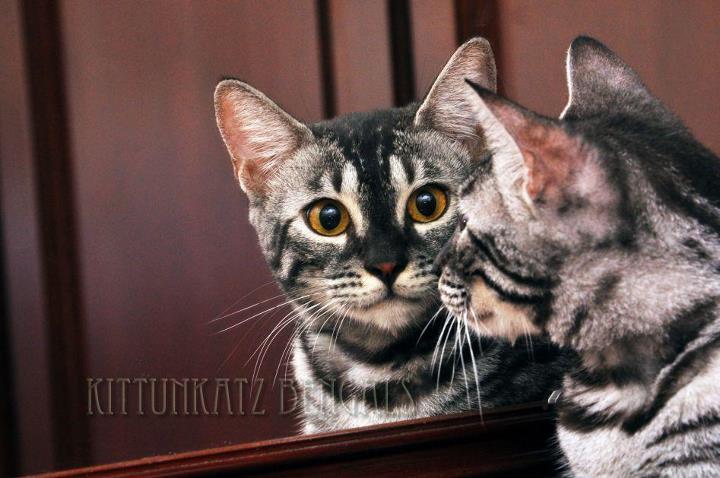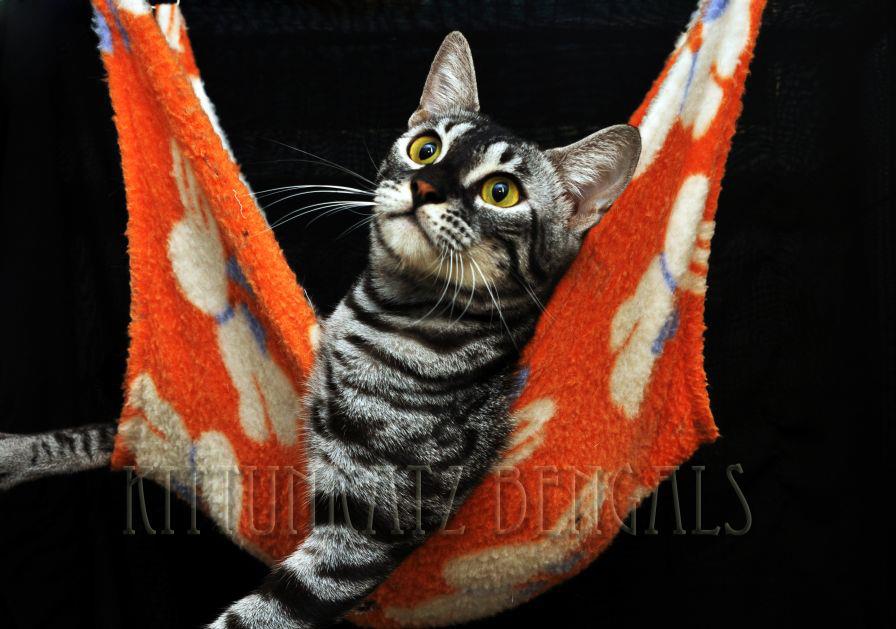The 4 Bengal Cat Coat Patterns
Not all Bengal cats look the same. The breed comes in a variety of patterns and colours. Each of these patterns are available in all colours making the Bengal a unique breed with a look to satisfy all tastes and preferences.
Bengal Rosetted Pattern

Bengal Spotted Pattern

Bengal Marble Pattern

Bengal Charcoal Pattern

5 Types Of Bengal Rosettes
When we look at Bengal cats with the rosetted pattern, there are 5 pattern types that breeders will speak of.
🐈 Paw-Print Rosettes
🐈 Donut Rosettes
🐈 Arrow-Head Rosettes
🐈 Cluster Rosettes
🐈 Clouded Rosettes
What’s your favourite Bengal coat pattern?
Rosetting was one of the breeds greatest achievements as this was the desired pattern the founding breeders originally set out to achieve.

Ashmiyah Rosetted Coat Patterns

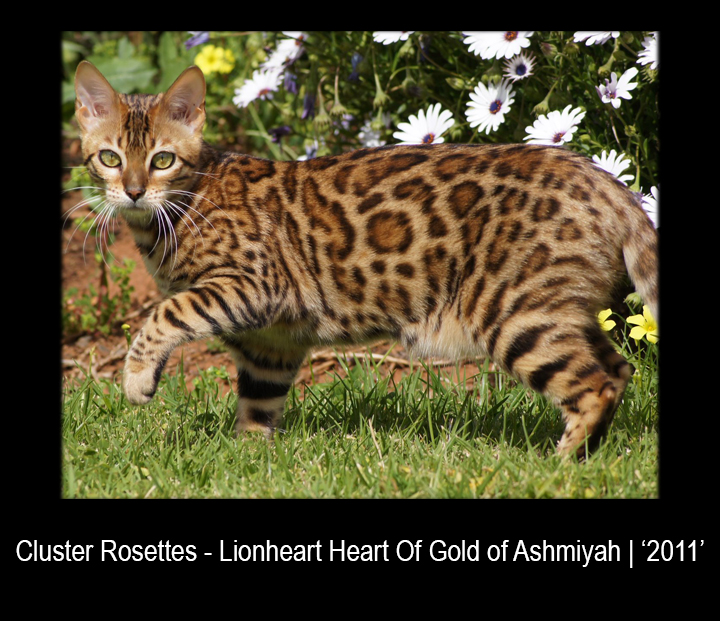

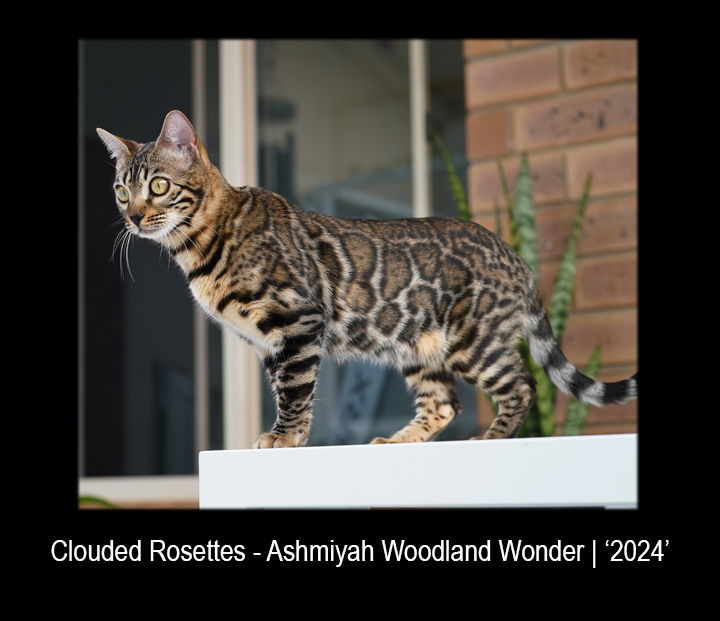
The Spotted Bengal Coat Pattern
This coat pattern speaks for itself. In Bengal cats, the spotted pattern should appear random, diagonal, or horizontal—never vertical. The background should be lighter in color to provide excellent contrast against the spots.
The single spotting takes inspiration from cheetahs and small spotted forest cats, featuring monochrome spots scattered across a contrasting background.
When people see a spotted cat coat, they often instantly identify it as a Bengal. However, there are other spotted domestic tabby cats, such as the Egyptian Mau, Ocicat, and Oriental Shorthair. Interestingly, the Egyptian Mau and Ocicat were among the earliest permissible outcrosses for the Bengal cat breed and were used to help refine the breed’s spotting in its early development.
The Bengal Cat Breed Standard classifies all spotted and rosetted cats as “spotted,” regardless of the specific pattern displayed. However, Bengal cat breeders often differentiate between spots and various rosetting patterns when discussing the coat type with others.
At Ashmiyah Bengal Cats we very rarely see straight spotted kittens as we specifically breed for the tri-coloured rosetted coat patterns.

There are 2 Marble Coat Patterns
There are two types of marble coat patterns in Bengal cats: the Sheeted Marble pattern and the Chaotic Marble pattern, which are quite distinct from each other.
The Sheeted Marble pattern
This pattern looks as its name suggests: the darker contrast color covers the Bengal’s body like a draped sheet, giving the appearance of a single, uniform color. This pattern is rare because many breeders prefer to avoid this recessive gene in their breeding lines.
While some breeders claim that the Sheeted Marble pattern opens up as the cat grows, this has not been widely observed. Typically, a Sheeted Bengal cat’s coat remains consistent throughout its life.
The Chaotic Marble Pattern
This pattern is more popular due to its artistic display of swirling colors that entangle and stretch across the Bengal’s body. This pattern features an extreme horizontal flow with vibrant colors, and coats with more varying color tones are highly prized.
The Chaotic Marble pattern takes about two years to fully mature. As the kitten grows in length, height, and width, the coat pattern stretches horizontally, vertically, and finally wraps around the body. Once the cat finishes growing, both its coat and body size reach full maturity.
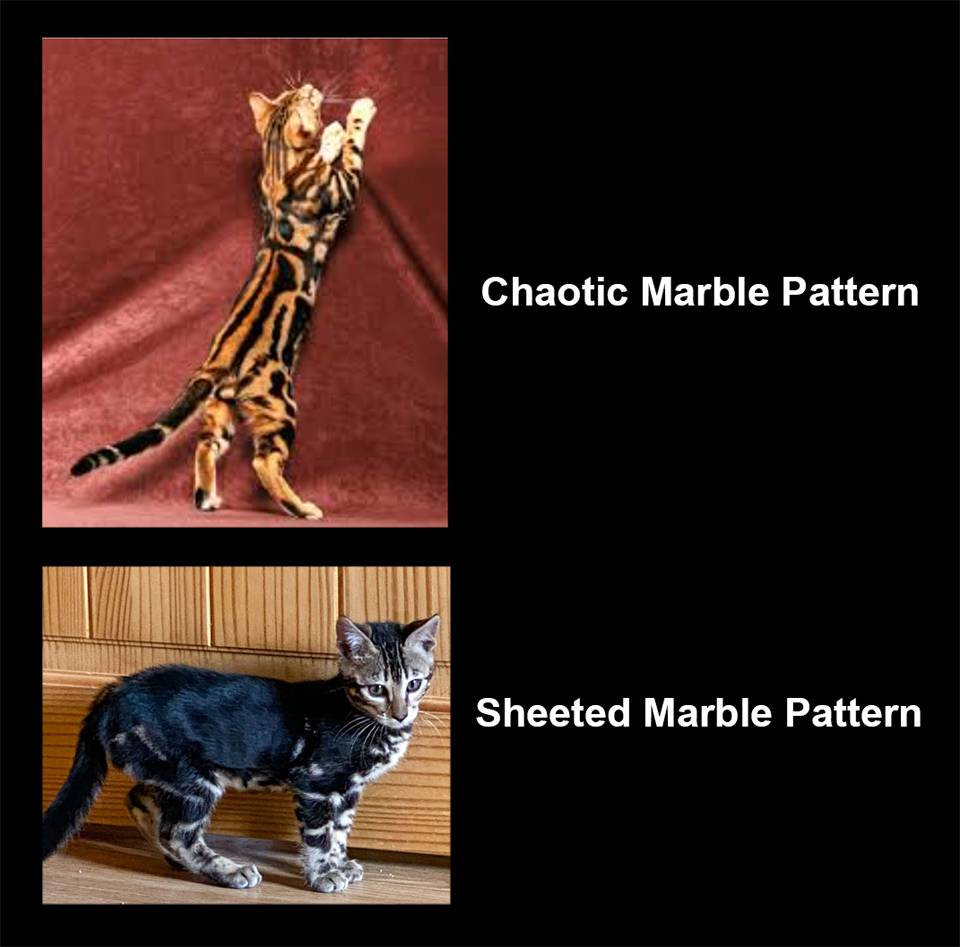
Are Marble Bengals Rare?
Marble Bengals have been around since the Bengal breed’s inception.
While a few dedicated breeders overseas focus on refining the Marble pattern and colors, most breeding programs are small and their specialty leans to the Rosetted pattern. Consequently, many breeders do not have the gene pool to simultaneously produce both high-quality Spotted Bengals and high-quality Marble Bengals at the same time.
The single ressesive gene for the Marble Pattern creates both the Sheeted and the Chaotic patterns. This makes breeding them with a consistant look very difficult and unless the breeding program is dedicated to specifically enhancing and refining the look, it just goes in circles.
Sancheita Kakoda Trail
Back in 2009 this special boy joined us and took the Show Bench by storm. He was a ‘çutting edge’ Marble back in the day and his temperament was superb!
He was pictured here at around 8 months of age, so still had a lot of pattern development to go before reaching full pattern maturity.
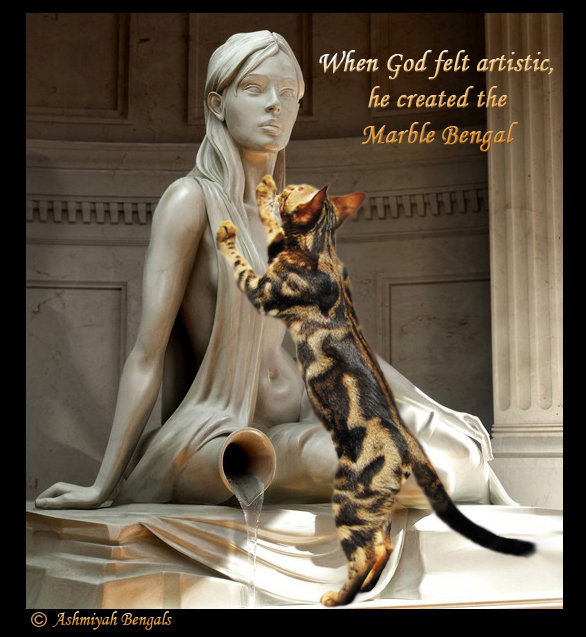
Coat Patterns of the Charcoal Bengal Cat
The Charcoal Expression is a pattern effect (not a pattern) in which the genes that regulate the activation of light and dark pigments, influence the overall appearance of the pattern.
A unique gene, APb, found only in the Asian Leopard Cat, contributes to the creation of the charcoal expression. Contrary to popular belief, this expression can appear in cats with both the APb/a and APb/APb genetic combinations.
Charcoal Bengals have a distinct appearance compared to non-charcoal Bengals and can come in various colors and patterns. Key features include:
Darker overall markings and background color, giving the impression of a shadow cast over the cat
A “Zorro-like” mask over the nose, extending to the cheeks, temples, and around the eyes
White or near-white “goggles” around the eyes
A cape across the back, though it may not always be visible in minks, lynx, and sepias.
5 facts we know about the Charcoal Bengal
🟠 We do know that Charcoal can not be carried for
🟠 The Bengal either is a Charcoal or is not a Charcoal
🟠 Charcoal is a pattern effect that can alter both the pattern and colour
🟠 You can have charcoal without “a”, but you can’t have charcoal without “APb”
🟠 The Apb gene is the ALC, Asian Leopard Cat agouti gene (found only in ALCs)
🟠 I’ve no doubt that in the future there will be many more discoveries about the genetic makeup of the Charcoal Bengal.
Where different genes have originated:
🟣 The blue Bengal color (dilute) likely entered the breed via Russian Blues or British Shorthairs.
🟣 Snow Bengal colors probably came from Siamese or Burmese cats.
🟣 Long-haired Bengals likely got this recessive trait from Abyssinians.
🟣 The Apb gene literally descends from five individual Asian Leopard Cats. More may be found in the future, but as of yet, the tracing only shows 5 ALCs being responsible for the gene.
My favourite Charcoal Bengal!
This beauty is Russicats Polar Day and she was impoted into Australia by Julie of Sanchita Bengal Cats back in 2012. She was the first imported Charcoal and the first Silver Charcoal coat pattern that I’d had the pleasure of meeting in person.
Back in 2012 Charcoals had hardly been heard of and they were only just begining to enter breeding programs. The DNA test for the Charcoal genetics was founded many years later.
Russicats Polar Day is the Great Grand Dam of my gorgeous queen, Sancheita Legacy. Keep an eye out for her kittens in 2024-2025.
